When its doors opened in April 1984, in an area where it was, and indeed still is, surrounded by other soaplands and countless other establishments serving sex-related services, it must have seemed that success for the Queen Chateau was a certainty.
But it wasn’t.
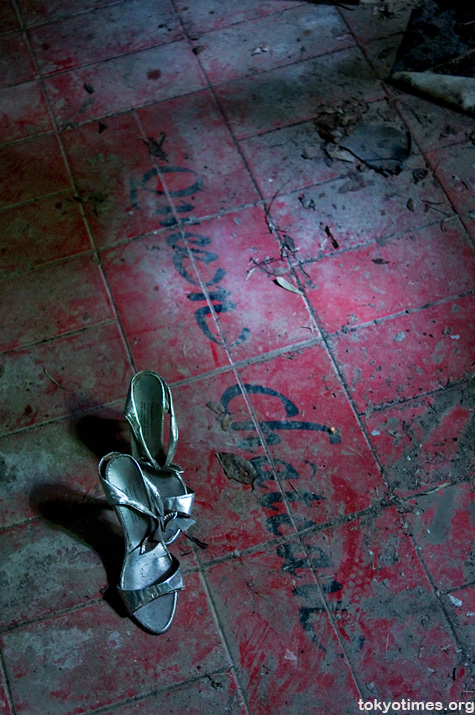
And, according to different sources, it closed those same doors once suggestively thrown open that very same year, or, somewhat slightly less disastrously, several years later in 1987.
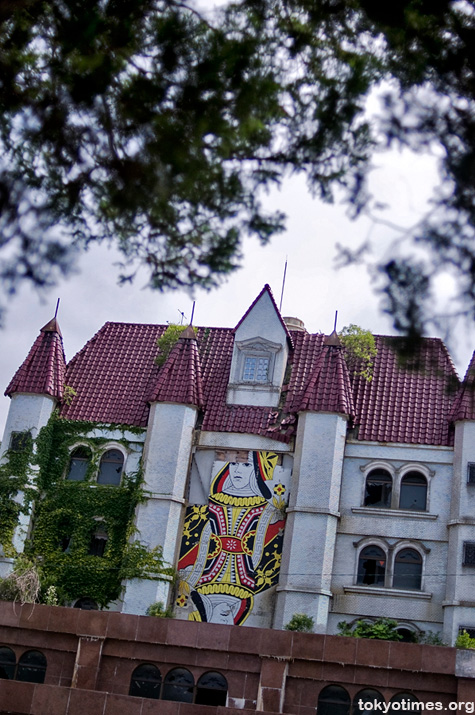
But either way, it’s still a mystery why it failed, although at the same time it is fairly safe to say that it wasn’t down to a lack of effort in regards the decor, due to its charmingly restrained chateau-like chic.
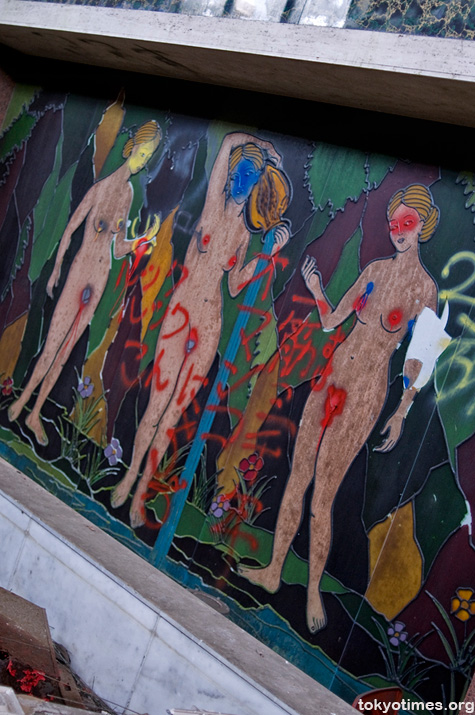
However, regardless of such fineries, it’s probable that phone rang more in relation to payment requests rather than reservations.
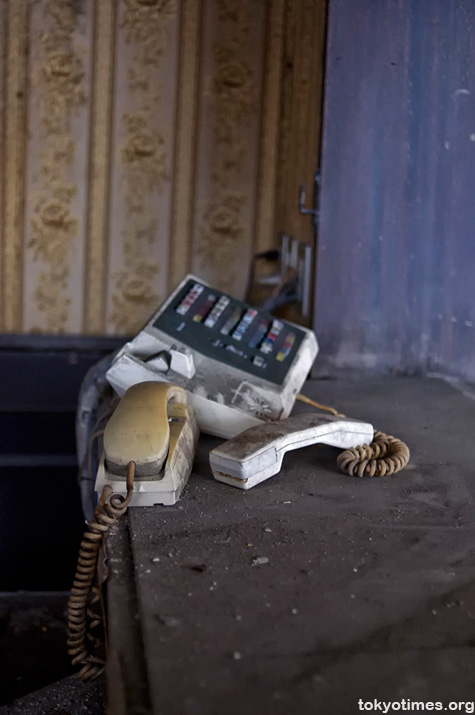
And the rooms, where the place’s ten working girls once plied their trade, are now arguably more sordid than any of the activities that were once performed in them.
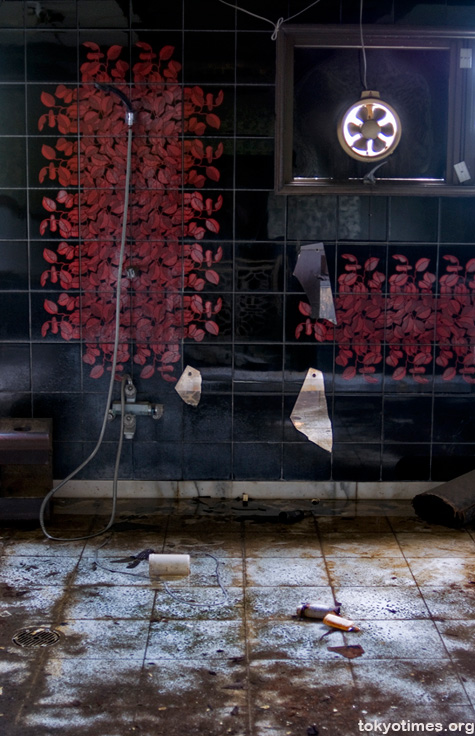
The remaining furnishings hinting at the soapy shenanigans that briefly went on there.
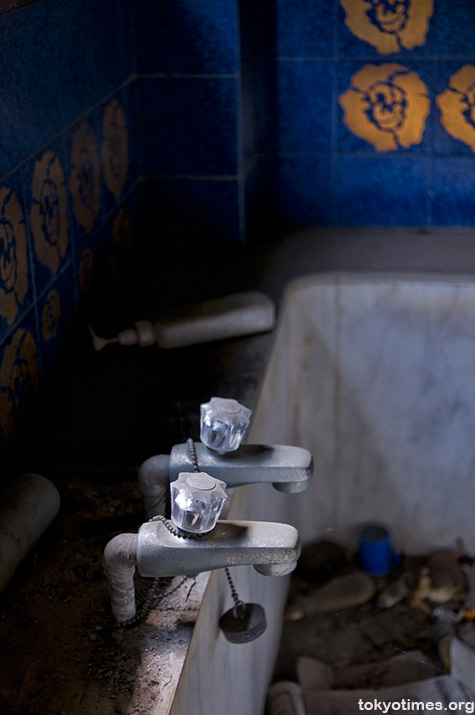
Which, it seems, often involved these uncomfortable looking plastic chairs.
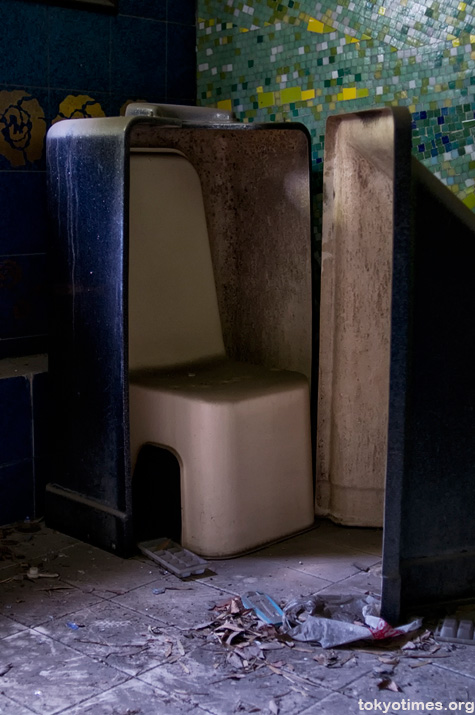
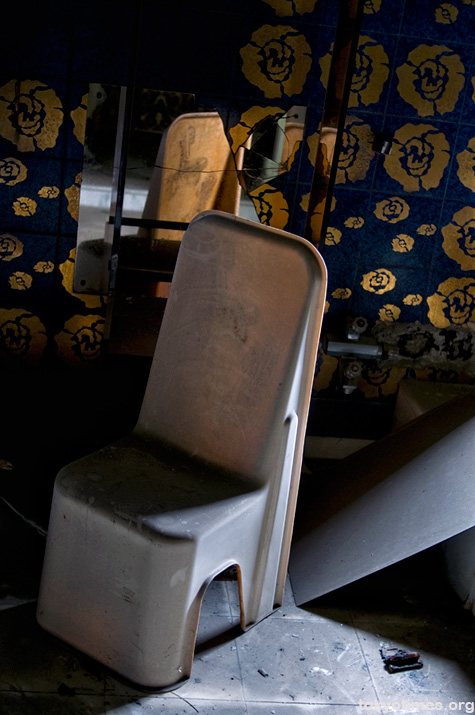
But definitely not their more comfortable and cushion-bearing cousins.
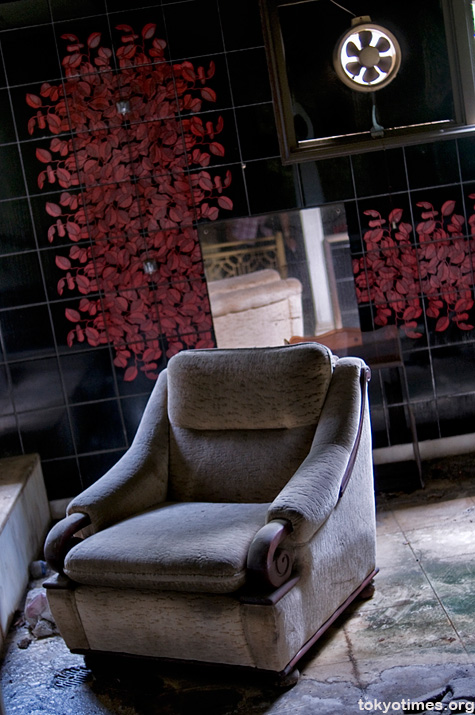
And yet as unquestionably pleasurable as soapland must be for the punter, for those paid to please, it must have been (and be) an especially different experience. One were a couple of drinks or some other concoction can’t have just been nice, but a necessity.
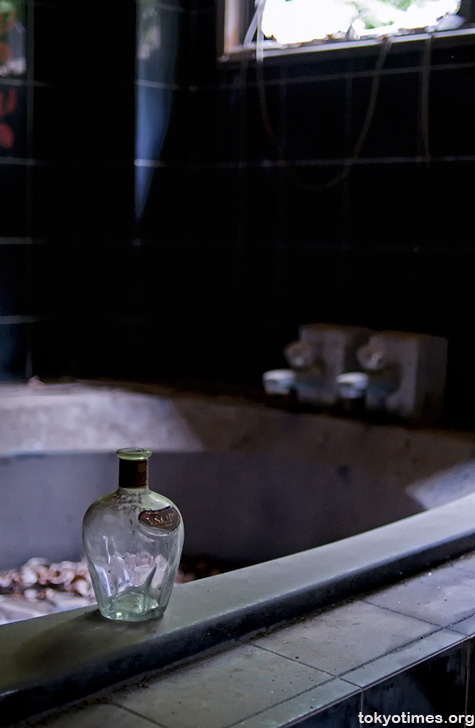
A point that became immediately apparent upon stepping inside the Queen Chateau, as, due to the main doors being boarded up, a rear entry was the only option, instead of a once less difficultly negotiated front one; leading us through a depressingly dark and horribly confined area with packed-in bunk beds and basic cooking and toilet facilities — a part of the building where the staff obviously once slept and spent their free (or possibly not so free) time.
The unlit and warren-like nature of the place meant that taking pictures was impossible, but at the same time, it made the sight of business cards suggesting euphemistic visits to ‘tearooms’ (ティールーム) with the likes of Jean (ジーン) and Claudia (クラウディア) all the more unsettling.
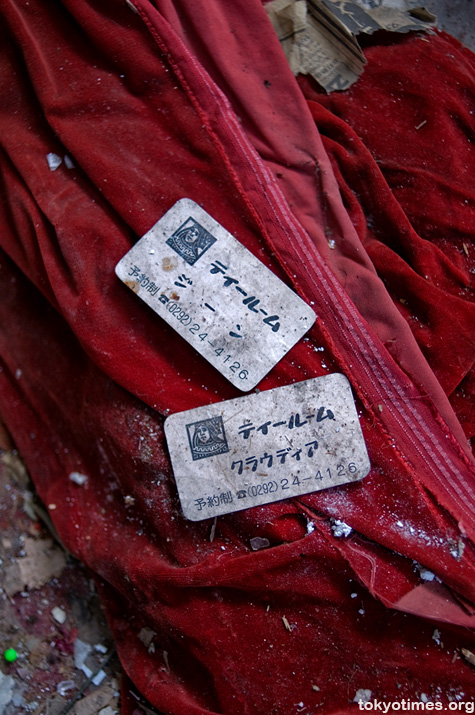
tamh says
I love this haikyo, it’s reminiscent of some others you’ve done in the past, and however it’s a subtle cue to the ephemeral business of love hotels in Japan. Thanks as always for your post, Lee!
Lee says
Thanks tamh! Yeah, it’s a while since I’ve visited somewhere like this. There were some other places of a dubious nature abandoned nearby as well, but unfortunately they were way too dark to take photos in.
Michael says
Nice post Lee. Haven’t seen this one for a while, but good to know it’s still around. You reckon it’s a pressing one to see or is it likely to remain open and rotting for some time yet? Check out my new post btw – you’ll really have to take a trip over here some time you know!
Lee says
Thanks Mike. Yeah, it’s one of the few well known haikyo relatively near Tokyo that I hadn’t done. I honestly can’t see it being knocked down any time soon. It’s not in the nicest of areas, so I don’t think people will worry about it being an eyesore.
And yes, I will. I have my eye on a few places I’ve found when out cycling, I just need someone to break into them, but other than that, I don’t have many places left to visit.
Yoli says
These images are amazing. I love them!
Lee says
Thanks Yoli!
Maria says
In Crete you try to get in in an empty old building it used to be a hospital only to discover young student communists live there as an act to rebel against something I don’t really care about.
They look at you in a certain way when they see the camera.
If I only had my waitress id with me it ‘d have saved me that political paparrazi look.
Lee says
Student communists are pretty much the one thing you are guaranteed not to run into anywhere in Japan, let alone in a haikyo!
thomas vye says
Lovely. Abandoned places have a sad and ghostly beauty all of their own.
Lee says
Couldn’t agree more Thomas. It’s a feeling that I often find difficult to explain to people not interested in haikyo, but there’s something about these places that is almost always sad, and yet at the same time always, somehow, sort of beautiful.
C says
Lee, have you ever thought about publishing a book with your pictures of haikyo? i know there must be several books in japan, in japanese, for japanese about this topic…but a book in english for us english speakers about this topic for people interested in japan. what a coffee table edition it would be!! can i ask you a personal question? what camera do you use?
Lee says
Thanks a lot for the encouragement C. I have, although not seriously, thought about how great it would be to put all my haikyo photos into a book of some sort. But what kind of format, or if it would be possible to get a publisher even remotely interested, I really don’t know.
As for my camera, I use a Nikon D300. And, for practically all my haikyo shots, I use the Nikkor 35mm f/2.
Willy says
These, as always are great pics Lee. Well, the photography thing is superbly laudable, as is the commentary you attach, but what really puzzles me, is from where do you ferret out all these haikyou things?
When I was in Japan we used to go driving and find stuff, and certainly there is plenty to find… how do you do it? whats’ your methodology ( if that is the correct term…)
Curious, and fascinated as always,
… and cheers!
Willy
Lee says
Thanks Willy!
This one is quite a famous (or at least infamous) haikyo and, like quite a lot of the places I’ve visited, is mentioned in various haikyo books. Others I’ve simply stumbled upon like you did (which personally is the most exciting), and one or two others have been found on the web.
I currently have 4 ‘new’ places (all within an hour by bike from my place) on my watch list. Each one is abandoned, but frustratingly still sealed. Where are these much talked about out of control youths who go around smashing things up when you need them eh?
Paul says
Did you get to sneak a peek at the plastic-ume-blossom hall whilst you were in town?
Lee says
Yes, we got in the building, and came across some empty apartments and a few hostess bars/clubs. Unfortunately the hostess places were pitch black, so no good for photography. And we did see a JAL sign which presumably was the entry to the plastic-ume-blossom hall, but to get there meant clambering through an awful lot of very rank and piled up gomi. Not something I really fancied, and also, as I was weighing up the possibilities, I got spotted by one of the fellas from the soapland opposite.
Thanks for putting me on to it though. It was interesting walking round the place. Lots of doors and corridors which meant for some tense moments due to various sounds from the neighbourhood, and a very startled cat charging out of one door made for two equally startled haikyoists!
Peta says
Awesome work! I love your haikyo stuff! Fascinating! Reminds me of detroit!
Lee says
Thanks Peta! As you can probably tell, I love visiting them. Just wish there were more of them…
Peta says
Funny isn’t it.. one man’s failure is another man’s treasure! No doubt there will be a plethora of them with the way the economy is going at the moment! Happy days 🙂 ahahh
Ser says
I love your posts on old buildings.
u wrote beautifully.
Please keep them coming.
Lee says
Thanks Ser!
Troy Worman says
Truly amazing and intriguing pictures!